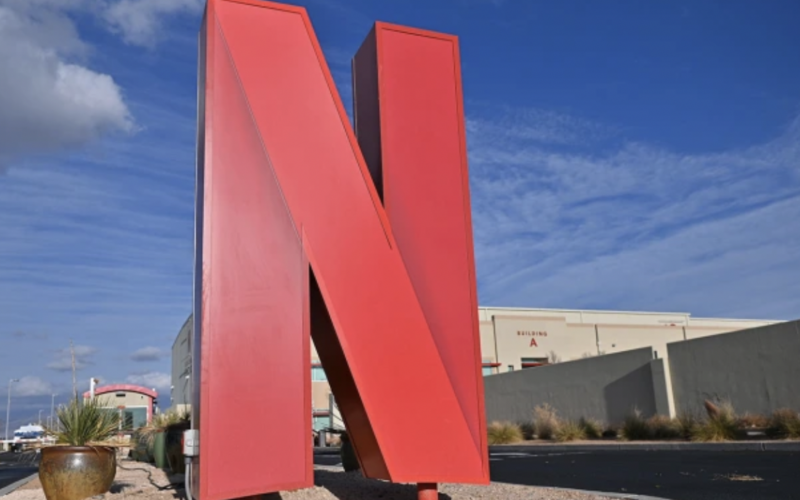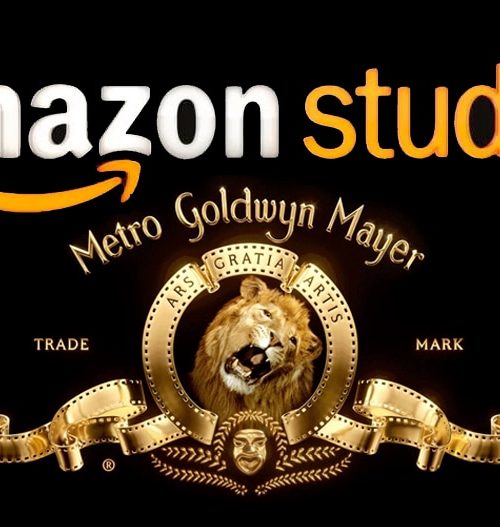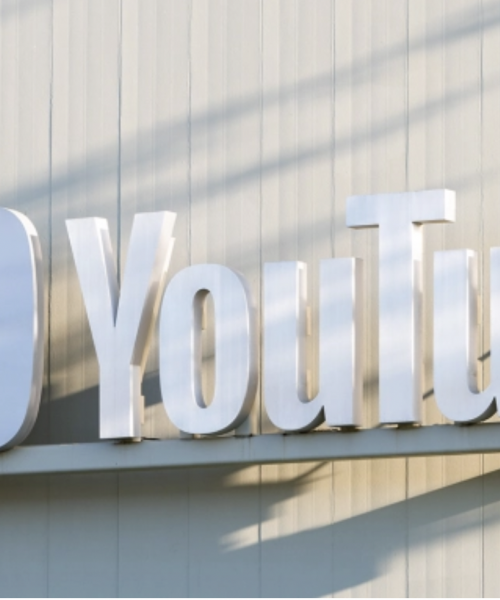BY GEORG SZALAI, ETAN VLESSING | HollywoodReporter.Com
Troy Warren for CNT #Business
ViacomCBS and Roku slumped, Imax and Comcast were down slightly while Sony and Lionsgate saw share prices jump year-over-year.
Coronavirus vaccines, variants and new waves of infection, global supply chain issues, Reddit-powered meme stocks, mergers and acquisitions, plus streaming hopes and fears were some of the ingredients that made 2021 another year of volatility for stocks, including those of audio entertainment companies and shares of Hollywood giants.
But while the broader stock market is on track to end the year significantly higher, just like it did in 2020, the media and entertainment sector looks to wrap it with a mix of big winners and losers and several hardly changed names, with even many gainers underperforming the broad-based S&P 500 index.
The S&P 500, which closed Wednesday at 4,788.64, tracked up 28.4 percent for the year as of the Dec. 29 market close, ahead of the final trading day of the year. In comparison, big Hollywood conglomerates, such as the Walt Disney Co. and ViacomCBS, which both hit 52-week lows in December, saw their shares down markedly for the year-to-date period.
Many industry stocks had fallen in 2020 due to the initial COVID-19 hit to economies and Hollywood giants’ advertising and other businesses, while streamers gained on subscriber jumps amid stay-at-home orders, followed by the mixed bag that was 2021. Shares of various sector companies gained amid hopes of potential upside from economies reopening after the virus crisis and growth in the streaming space.
Those shares were often hit later in the year over concerns about the omicron variant and the rising cost of competing for subscribers in the streaming age. Disney, which had recorded stock gains in the first pandemic year thanks to investor bullishness due to the early success of Disney+, faced new investor questions in 2021.
Slowing user growth momentum led to Wall Street debate about whether the Mouse House, headed up by CEO Bob Chapek, would hit its longer-term streaming subscriber targets weighed on the stock as Bob Iger leavesthe company at the end of the year. As of Wednesday’s market close, Disney shares were down 14.3 percent so far for the year at $154.87.
While ViacomCBS reported streaming growth, its shares kept declining in 2021 after also ending 2020 down. “ViacomCBS is executing well on Paramount+ with a solid content pipeline driving subs,” Wells Fargo analyst Steven Cahall highlighted in a Dec. 10 report, in which he maintained his “overweight” rating with a $60 price target. “Yet, the market does not appear bullish on the long-term streaming prospects.”
Cahall argued that the new year would see much focus on this theme: “We see 2022 largely about demonstrating streaming financials (e.g. peak losses) as Paramount+ continues to scale.” Shares in ViacomCBS ended Wednesday at $29.99, down 18.3 percent on the year.
It was a sunnier picture for the U.S.-listed stock of Sony Corp. as its businesses range from film and TV assets to its music and video gaming units all the way to consumer electronics, diversifying its exposure to different parts of the economy. Sony, which closed at $112.00 on Wednesday, followed a big 2020 stock increase with a gain of 25.6 percent in 2021, roughly in line with the S&P 500’s change.
Streaming powerhouse Netflix — which posted a 16.4 percent stock price rise in 2021 as it closed Wednesday at $610.54 — also made it two years of COVID pandemic gains in a row, even as it underperformed the broad market index. After its stock rose about 60 percent in 2020 thanks to a subscriber boost driven by stay-at-home orders, Netflix struggled with difficult year-ago comparisons for parts of 2021 before renewed optimism thanks to third-quarter subscriber and earnings upside surprises and the success of such originals as Squid Game and a pipeline of original fare that earned thumbs-ups from various analysts.
Roku as a streaming stock also jumped in 2020, but fell back in the latest year as consumers leaving homes more after the initial COVID hit and the global supply chain crisis impacted active account and revenue growth and Street expectations. On Dec. 29, Roku saw its stock price close at $224.80, which represented a steep 33.6 percent drop in 2021.
Movie theater stocks, which had hoped for a post-COVID comeback, also had different 2021 experiences. Improved investor sentiment thanks to vaccination programs and reopened circuits was followed by film slate reshuffles and the omicron variant emergence stirring new jitters late in the year.
The world’s largest exhibitor AMC Theatres, thanks to its status as a meme stock, recorded the biggest growth over the past 12 months, trending up 1,193.98 percent for 2021 as of Wednesday’s market close at $27.95. However, London-listed shares of Cineworld, the second-largest circuit in the world, closed at 31.90 pence, down 51.4 percent in 2021. That was driven by a big drop late in the year amid the omicron spread that brought back concerns about the company’s high debt load. Reports pointed to the company’s stock being one of the most “shorted” U.K. stocks, with bearish investors expecting a continuing drop in share value.
Cinemark Holdings, the No. 3 movie theater company in the world with a big presence in Latin America, gets high marks from analysts. But its stock looked to end the year down 7 percent after closing at $16.52 on Dec. 29. And Imax, which had a strong box office performance heading into the holiday period, was on track to end 2021 just down nearly 2 percent after closing at $18.09 on Wednesday.
Medium-sized media and entertainment companies, meanwhile, posted gains that outperformed the S&P 500 in the latest year, or held roughly steady. Fox Corp. has earned rave reviews from various analysts for its upside in the burgeoning sports betting field and focus on news and sports TV content, with its class A stock up 27.5 percent year-to-date as it closed at $37.09.
Meanwhile, AMC Networks and Lionsgate invited deal chatter over the past year, which lifted their stocks. Lionsgate’s Class A stock, which closed at $15.95, jumped by 42.7 percent for the year after the company unveiledthat it was exploring its options for Starz. That included a possible separation of the pay TV and streaming business and its studio operations.
When long-time AMC Networks CEO Josh Sapan stepped down this summer, with Matt Blank becoming interim CEO, some on Wall Streetwondered if the executive change could mean that a sale could be in the firm’s future. With no suitors yet making themselves known, stock in AMC Networks fell 2 percent so far in 2021 after closing at $34.45 on Wednesday.
In contrast, the stocks involved in the biggest entertainment industry deal of 2021 had different trajectories over the past year. Discovery in May unveiled a mega-deal to merge with AT&T’s WarnerMedia into Warner Bros. Discovery by mid-2022 and received European Union clearance for the transaction just before the holiday season. Discovery, after falling in 2020, lost further ground in 2021, trending down 20 percent nearing the year’s end as it closed at $23.87 on Wednesday.
Meanwhile, stock in AT&T — which will combine its WarnerMedia business with Discovery pending a completion of the deal — so far in 2021 is down 13.5 percent after closing at 24.64. Other big pay TV distribution players, whose financials and stocks have in recent years enjoyed a broadband boon, came under pressure late in 2021 amid slowing broadband subscriber growth.
“After a year in which every stock we cover – yes, every one – badly underperformed the market, it seems only appropriate to start our annual review/preview with a blues song,” wrote MoffettNathanson analyst Craig Moffett in a report just before Christmas. “For cable investors, in particular, the whiff of ‘end of an era’ pessimism is inescapable.”
Cable powerhouse and NBCUniversal owner Comcast’s stock held up better than others, only down 1.2 percent as 2021 gets set to end after its share price closed at $50.59 on Wednesday. Fellow cable giant Charter Communications was up just over 4 percent for 2021 so far as it closed at $656.28.
Looking at 2022, CFRA Research analyst Tuna Amobi tells THR that catalysts for entertainment stock performance includes “pent-up consumer demand for live sports and out-of-home entertainment” and potential stock moves related to signs of success in the streaming business.
There will be winners and losers though, as Morgan Stanley analyst Benjamin Swinburne noted in a Dec. 15 report. “Growth in streaming, advertising and live entertainment will drive strong revenue growth” across media and entertainment companies in 2022, he predicted.
“Strong demand trends across the board, but rapidly rising content costs create (a) wide range of risk and reward across the group” of stocks he covers, Swinburne warned. “The primary factor that will dictate a company’s ability to deliver earnings or margins in line or ahead of expectations next year is the ability to navigate rapidly appreciating content costs.”
In Other NEWS




































